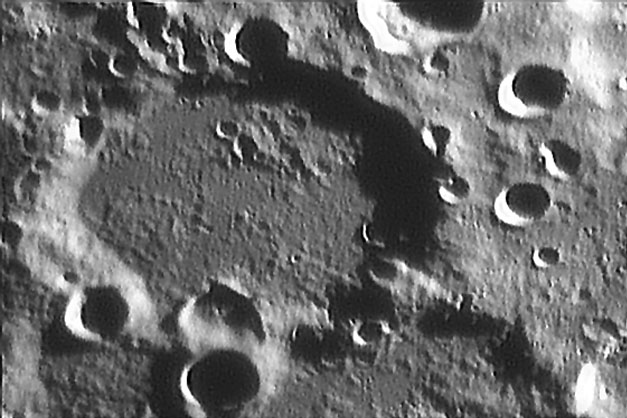Difference between revisions of "August 24, 2004"
| Line 11: | Line 11: | ||
<table width="80%" border="0" align="center" cellpadding="8"> | <table width="80%" border="0" align="center" cellpadding="8"> | ||
<tr> | <tr> | ||
| − | <td><div align="center" class="main_sm">Image Credit: [mailto:starman2@flash.net Wes Higgins]</div></td> | + | <td><div align="center" class="main_sm"><p>Image Credit: [mailto:starman2@flash.net Wes Higgins]</div></td> |
</tr> | </tr> | ||
</table> | </table> | ||
Revision as of 22:19, 17 January 2015
Don's Crater To Be?
Image Credit: Wes Higgins |
|
Don's Crater To Be? Lunar Craters are given names to commemorate significant contributors to science, especially lunar science. Unfortunately for scientists still alive, more than 1000 names have already been used to honor dead scientists and others, so that your name may already have been taken. But, the International Astronomical Union can use one named crater to commemorate two or more scientists with the same last name. For example, the 11 km crater Schmidt is overloaded in honoring Julius Schmidt (one of the greatest lunar observers of all time), Bernhard Schmidt (inventor of the Schmidt camera) and Otto Schmidt (Soviet naturalist). And the crater imaged here, Wilhelm - with the addition of an "s" - could also honor the greatest lunar mapper of the 20th century, Don Wilhelms of the USGS. Wilhelm, the crater, is 107 km wide and, according to the Times Atlas, 1 km deep. It is a older and battered crater, with about a dozen craters larger than 5 km diameter that have cut into it. Most of the floor has a hummocky (a geologist word for hilly) appearance, but an arc along the northern wall seems to be smoother and presumably younger. The Lunar Orbiter IV image confirms that this floor section is smoother and less cratered. For scientists who think that all light-colored smooth material (Cayley Plains) are basin ejecta must be embarrassed by evidence like this of small isolated patches. If this is not non-mare volcanic material I'll eat a virtual hat! Technical Details: Related Links: Tomorrow's LPOD: Men on the Moon |
Author & Editor: Technical Consultant: A service of: |
COMMENTS?
Register, and click on the Discussion tab at the top of the page.




